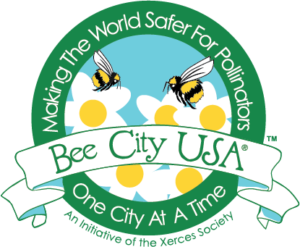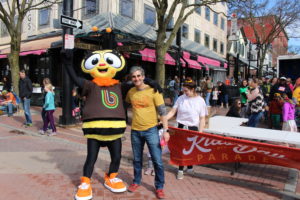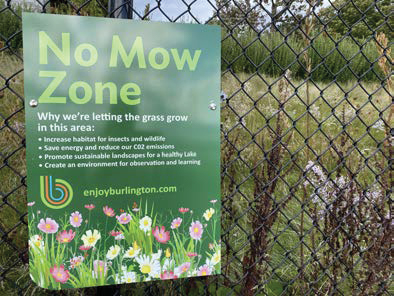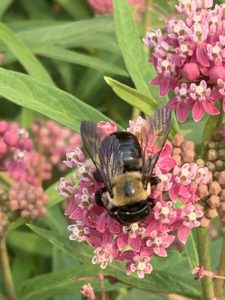Burlington is a Bee City
Burlington is a Bee City

We are proud to be a Bee City and an affiliate of Bee City USA, an initiative that aims to protect bees and other pollinators with native plants, nesting sites, and protection from pesticides. We have taken on this responsibility because conservation and the environment is important to us, as stewardship is one of our core values at Burlington Parks, Recreation, and Waterfront.
The initiative was created by The Xerces Society for Invertebrate Conservation, which is an international nonprofit organization that aims to defend pollinators, reduce pesticide use, and protect endangered species.
Vermont is home to 275 out of the 4,000 species of native bees from the United States and Canada. Over the past three decades, the bee population has been rapidly declining, which threatens both humans and other plants and wildlife.

In 2016, the city of Burlington took a huge step in protecting pollinators by banning the use of neonicotinoids, a class of pesticides, from being sprayed on lands under its jurisdiction unless for an academic study or it is the least environmentally harmful option. These pesticides can cause damage to pollinators, such as death, disease, and changes in reproduction patterns.
In April 2019 on Kids’ Day, BPRW Director Cindi Wight and Mayor Miro Weinberger announced Burlington’s induction into the Bee City USA designation (and the announcement of the BPRW mascot, Bea!).
Since efforts towards this initiative began in 2019, Burlington Parks has taken tremendous efforts to increase places for pollinators to thrive. In our parks, we have transitioned our annual beds with perennials, with around 70% of those perennials being native species. Several of these plants have been sourced from local growers to support farms around Burlington.

In the Urban Reserve off of the Greenway, a 35,000 square foot concrete area was converted into a meadow. Another 10,000 square foot area along the Greenway at Lakeview Cemetary was designated as a ‘No Mow’ area to allow for native plants and insects to thrive. We have also started tree nurseries at three major sites: McKenzie Park, Ethan Allen Park, and Oakledge Park.
We’ve collaborated with the University of Vermont, 350 Vermont, The American Chestnut Foundation, the US Forest Service, US Fish and Wildlife, the Intervale, and Audubon Vermont in their efforts in order to plant trees, increase the amount of native plants, and increase outreach about our efforts.
Another project included collaborating with the University of Vermont and Bee City USA to develop a map of shared project areas from UVM’s campus to the waterfront to show where the two will collaborate. A second mapping project was spearheaded by volunteers in which they documented public and private pollinator-friendly landscapes and potential project spaces.

“Bee”ing a Bee City is a continuous effort that involves collaboration from several departments and organizations across the city. It is imperative that we protect these creatures because they are so important to our city. Without the bees, the Intervale wouldn’t be able to provide food or beauty to our city. Our community gardens wouldn’t produce a plentiful harvest. Our streets would not have trees to provide us with shaded areas in the summer. We are committed to this effort for the overall health of our community and our environment.
Interested in helping our efforts? Burlington Wildways has compiled a list of native plant species that you can plant in your yard or garden to encourage more pollinators to make a home in Burlington. We also suggest that you decrease or eliminate the use of harmful pesticides that can hurt our friendly pollinators.

Learn more:
Bee City 2021 Report
The Life of a Vermont Bee
Rewilding our Home Lawns
